Affiliate links on Android Authority may earn us a commission. Learn more.
Ears on with the LG G5's Bang and Olufsen DAC
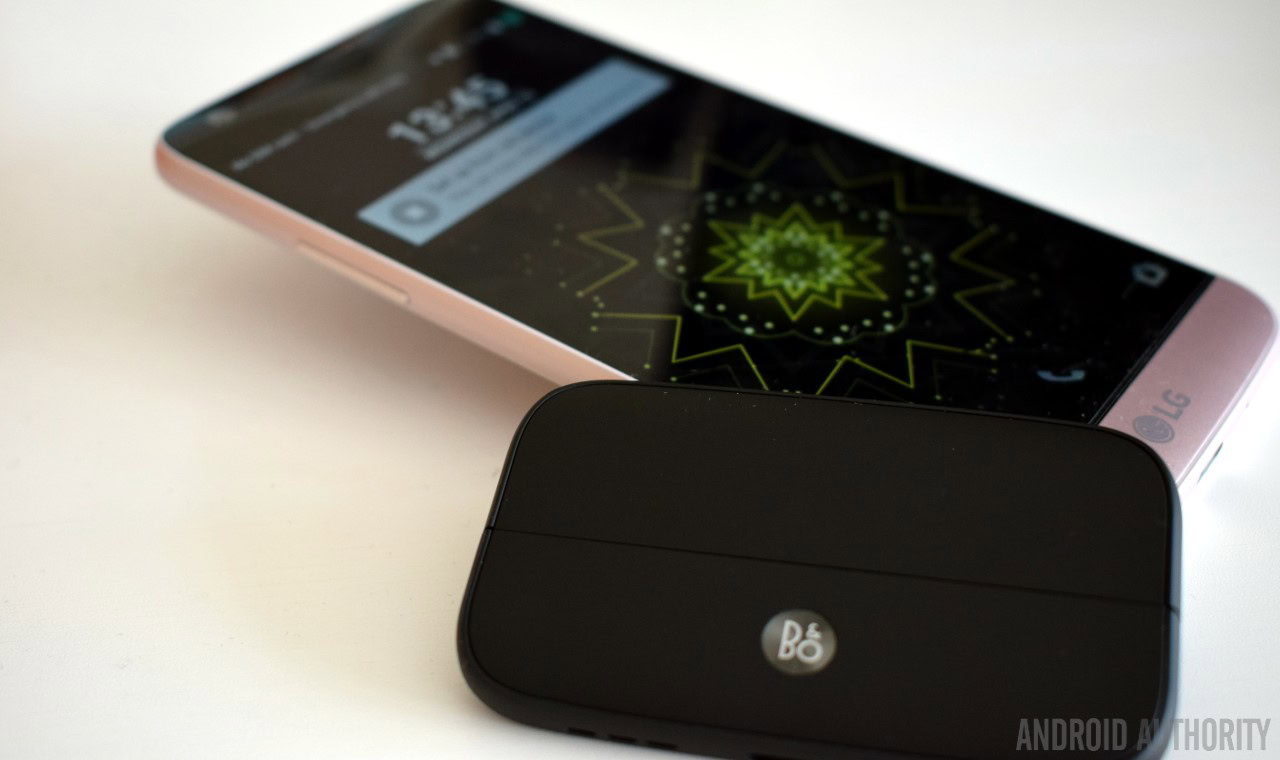
Along with its new G5 smartphone, LG unveiled a wide range of mobile accessories, dubbed the LG Friends, to complement its latest flagship. During its launch event, LG proudly presented its LG Hi-Fi Plus and B&O PLAY modular audio accessory. In short, this is a portable Hi-Fi digital-to-analogue converter (DAC) and headphone amplifier developed in collaboration with Danish audio experts Bang and Olufsen.
The hardware promises top of the line specifications and Hi-Fi sound for those with acute ears. Today we are going to take a closer look at what the B&O PLAY DAC has to offer and how it compares to the listening experience available from our pre-production G5 right out of the box.
A closer look at LG Hi-Fi Plus with B&O PLAY
Just like the LG CAM Plus, the B&O PLAY audio module snaps straight into the bottom of the G5, featuring its own dedicated 3.5mm jack, along with the same USB Type-C connector and bottom speaker grill that you find on the regular G5. As an immediate bonus, this second jack means that you can conveniently plug your headphones into the bottom of the phone. Interestingly, the regular LG G5 headphone jack continues to function while the external DAC is plugged, although obviously without any of the benefits offered by the modular component.
Although the module is primarily marketed as an accessory for the LG G5, the B&O Play can actually be used with a wider range of devices. The DAC can be connected up to any smartphone or even a PC via its USB Type-C port, making it quite a handy a portable audio companion — just as long as you don’t mind carrying around additional cables and hardware in your pocket.
[related_videos title=”More from the LG Friends:” align=”center” type=”custom” videos=”685451,675613,674813″]
The Hi-Fi Plus B&O module is built from a Sabre ES9028C2M digital to analogue converter and a Sabre 9602c headphone amplifier, which are very similar parts to those found inside the impressive LG V10. Both of these components boasts some cutting-edge specification sheets, offering up to 120dB of dynamic range, -102dB of total harmonic distortion, and support for a number of audio formats. LG says that its Hi-Fi Plus software with the B&O PLAY module can support audio files up to 32-bits and 384kHz in quality through the use of “up-bit” and over-sampling techniques from a 24bit/192kHz source.
Once it’s plugged in, the audio output on the module doesn’t appear to activate right away. Instead, a small amount of initialization time is required each and every time that you plug your headphones into the jack on the phone’s underside, after which a Hi-Fi icon appears in the status bar.
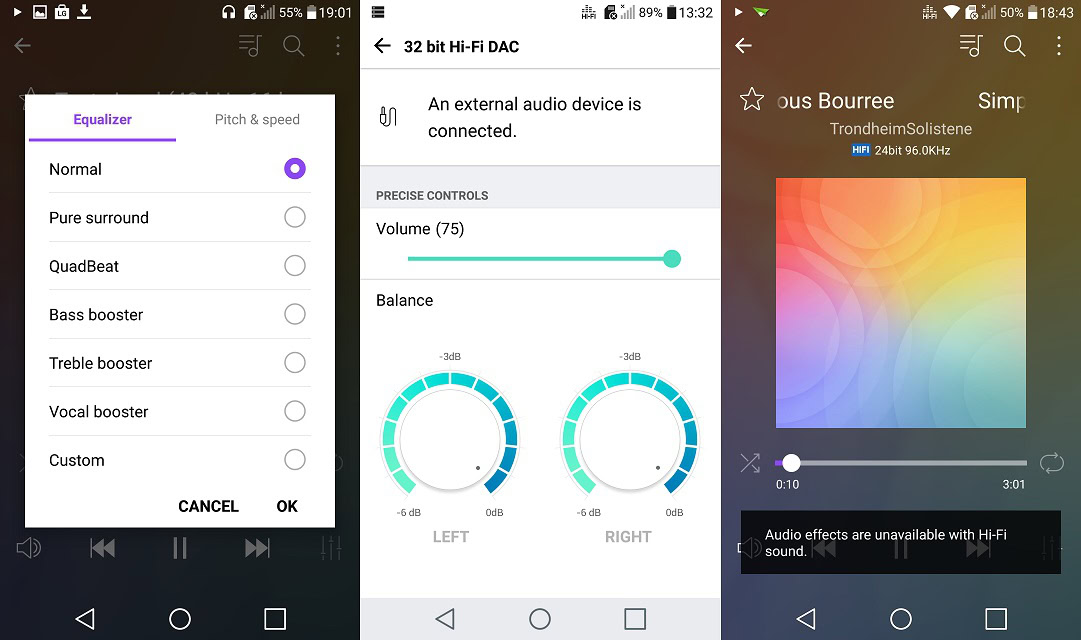
Upon plugging in the DAC and your headphones you will be presented with the option to fine tune the listening experience. However, all this menu currently contains is a volume slider and separate volume balance controls for the left and right channels.
The rest of the EQ and effects settings remain housed in LG’s default music app, which we will be using throughout this review. There are a selection of EQ pre-sets, the option to customize the sound yourself with a 7 band equalizer, and even pitch and speed controls for some fun. Disappointingly, these features are disabled when playing back any file that LG considers Hi-Fi quality, such as 24-bit FLACs or DSD files. This is the case regardless of whether you are using the DAC or not.
It’s worth noting that the regular LG G5 audio output is perfectly capable of playing back high quality 24-bit files and DSD alternatives as well. Rather than building on LG’s default software and features, the B&O DAC is squarely aimed at providing a superior listening experience. So how does it do?
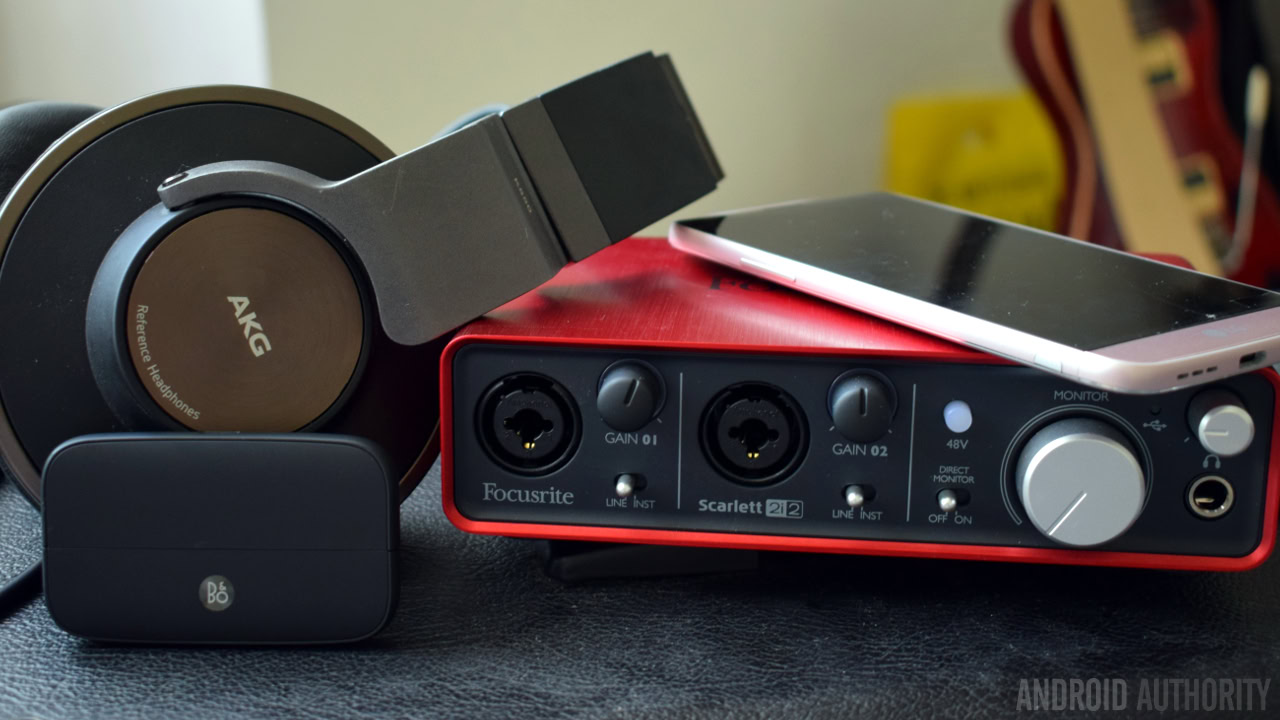
Specs for Audiophiles
We will begin this showdown in the usual fashion, with some scientific testing. We are coming straight out of the LG G5 and the B&O DAC into out Focusrite Scarlette 2i2’s line-in connectors, applying the bare minimum gain in the pre-amp to keep the signal path as transparent as possible. Note that there are limitations to how clean we can keep the signal path. We stuck a couple of 24-bit, 96kHz test files from the RightMark Audio Analyzer software suite on the phone and proceeded to play them back, at the same quality, into our audio interface, taking an average over 5 test runs.
One of the first things I noted was that the B&O DAC is loud at maximum volume. I had to turn down the pre-amp to prevent clipping after it was initially setup for the regular G5 output, which bodes well. Here are the results:
| Bang and Olufsen DAC | Regular LG G5 Output | |
|---|---|---|
Noise Floor | Bang and Olufsen DAC -100.1 dB | Regular LG G5 Output -90.4 dB |
Dynamic Range | Bang and Olufsen DAC 100.2 dB | Regular LG G5 Output 90.4 dB |
Total Harmonic Distortion | Bang and Olufsen DAC 0.0019 % | Regular LG G5 Output 0.0073 % |
Intermodulation Distortion | Bang and Olufsen DAC 0.0033 % | Regular LG G5 Output 0.0097 % |
Intermodulation + Noise | Bang and Olufsen DAC 0.0042 % | Regular LG G5 Output 0.0103 % |
Channel Crosstalk | Bang and Olufsen DAC -98.1 dB | Regular LG G5 Output -84.5 dB |
Both signal paths present quite clean, low distortion circuits that should produce pleasing results for the vast majority of listeners. There’s a clear advantage for the modular DAC across all of the test results though, as we would expect. This should allow for slightly more detail to come through, thanks to its lower distortion and noise characteristics.
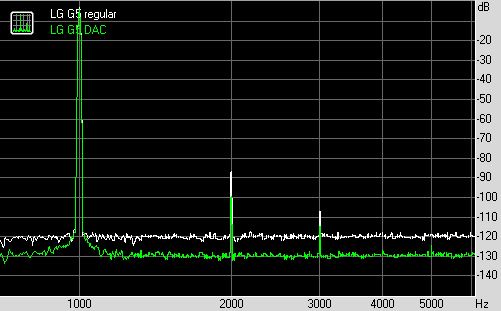
Impressively, the B&O module manages to push towards the noise limit of the 2i2’s analogue to digital converter (-105dB), presenting a noise floor of -101.1 dB that is just about capable of making use of files with a bit depth greater than the commonplace 16-bits. However, these specs suggest that keen listeners won’t benefit fully from the extra detail promised by a 24-bit file, as a -101dB noise floor works out to roughly only 18-bits of data. The situation is definitely worse for the regular G5 output though, which provides only a -90dB noise floor that fails to make the most of the detail available from a basic 16-bit file, let alone one that is properly dithered or offers 24-bits of data.
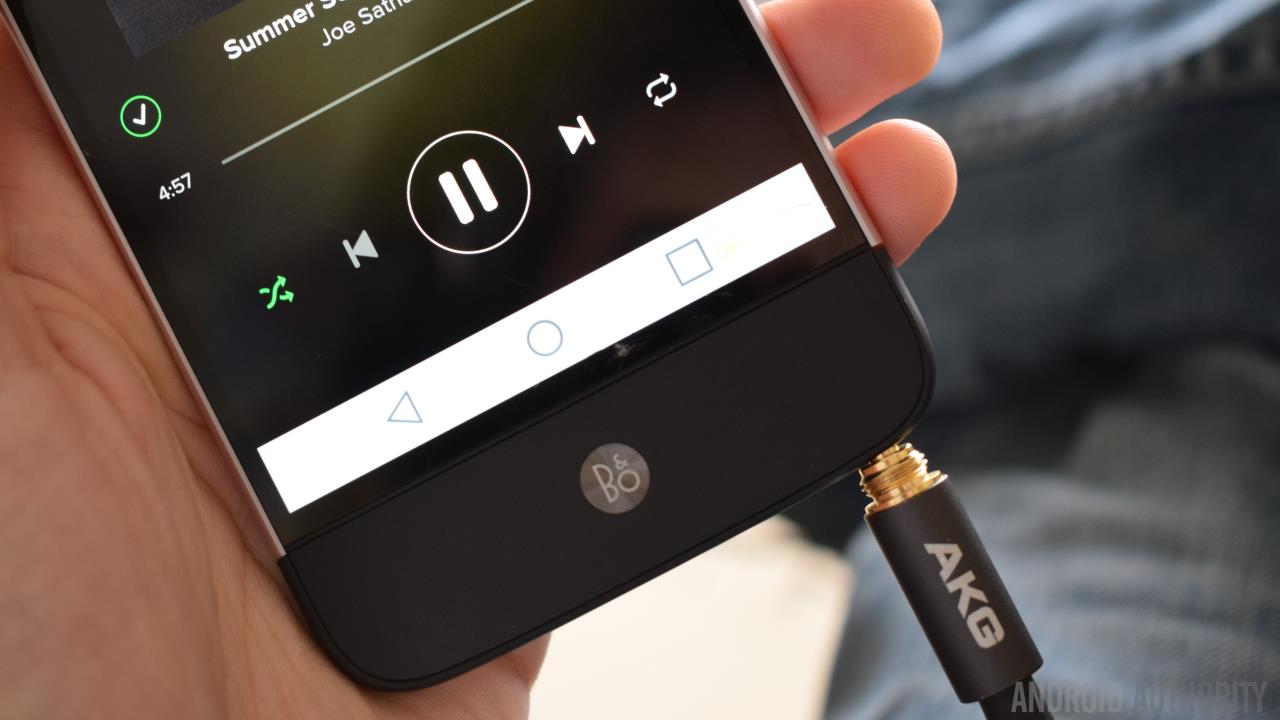
Listening Test
Ok, enough of the technical mumbo jumbo, let’s dive on into actually listening to the DAC, which is the point after all. I’ve clocked up a serious number of hours listening to both the regular headphone jack on the LG G5 and the Bang & Oulfsen PLAY now, having gone through a range of file types and music genres. The list includes 24-bit 96kHz FLAC, 2.8MHz DSD64, 16-bit 44.1kHz CD rips, MP3s, and even streaming tunes through Spotify.

For the listening test I donned my pair of AKG K550’s, a reasonably priced set of “reference” headphones with a 32 ohm input impedance and frequency range from 12Hz to 28KHz.
My impressions of both the regular LG G5’s audio output and the B&O DAC are very positive. The default G5 pumps out a mostly well balanced presentation with plenty of detail and clean sounding highs, although there’s not a huge amount of liveliness to them. The bass can be a little lacking in places, especially in punchier tracks, and, while certainly not narrow, the G5’s stereo output isn’t especially wide. We can attribute this to the handset’s mediocre crosstalk test result, which reveals some bleed between the left and right channels.
I struggled to make out any difference between my “Hi-Fi” files and their equivalent CD quality tracks, but those will a very keen ear will be able to pick up on some differences when listening to their compressed alternatives.
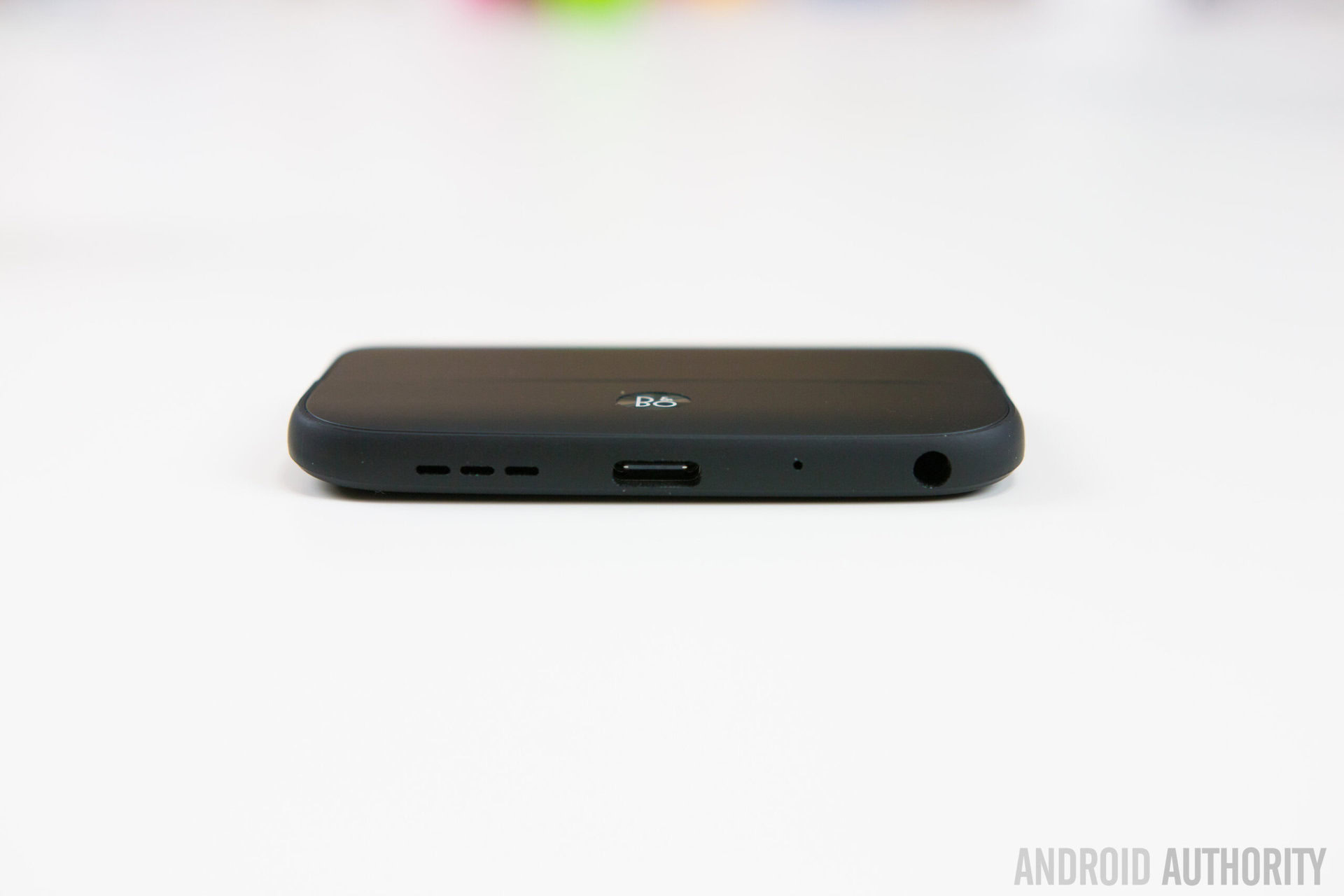
This is also essentially the case when switching to the B&O DAC. The larger 24-bit file sizes offer no noticeable improvement in audio quality over smaller lossless files to my ear. However, the modular DAC does sound a fair bit different to the regular G5, offering up a well balanced sound. Kick and snare drums snap a little bit more, the bass is present and clear throughout, and there are some finer details discernible in distorted guitars and gruff vocals.
There is also more width available with the DAC, which can really help to bring out depth in string pieces, the subtleties of a backing instrument, and reverbs seems extra deep and enveloping. The better crosstalk characteristics in the B&O DAC certainly help here, as the sound placement moved from my peripheral vision right to the sides of my head. I can best describe the listening experience as a little more “full bodied” and involving, although there isn’t a night and day difference.
Aside from the extra width, my main take-away is that the Sabre 9602c amplifier seems more capable at driving bass through low impedance headphones. I went back to conduct a frequency sweep of both DACs to see if I could confirm this a little more scientifically.
Keeping the volume levels down in the ear friendly range (50 percent), I conducted multiple sine sweeps with the jack open and with two sets of headphones that have different impedances. The test reveals that the regular LG G5 output struggles with some early bass roll-off.
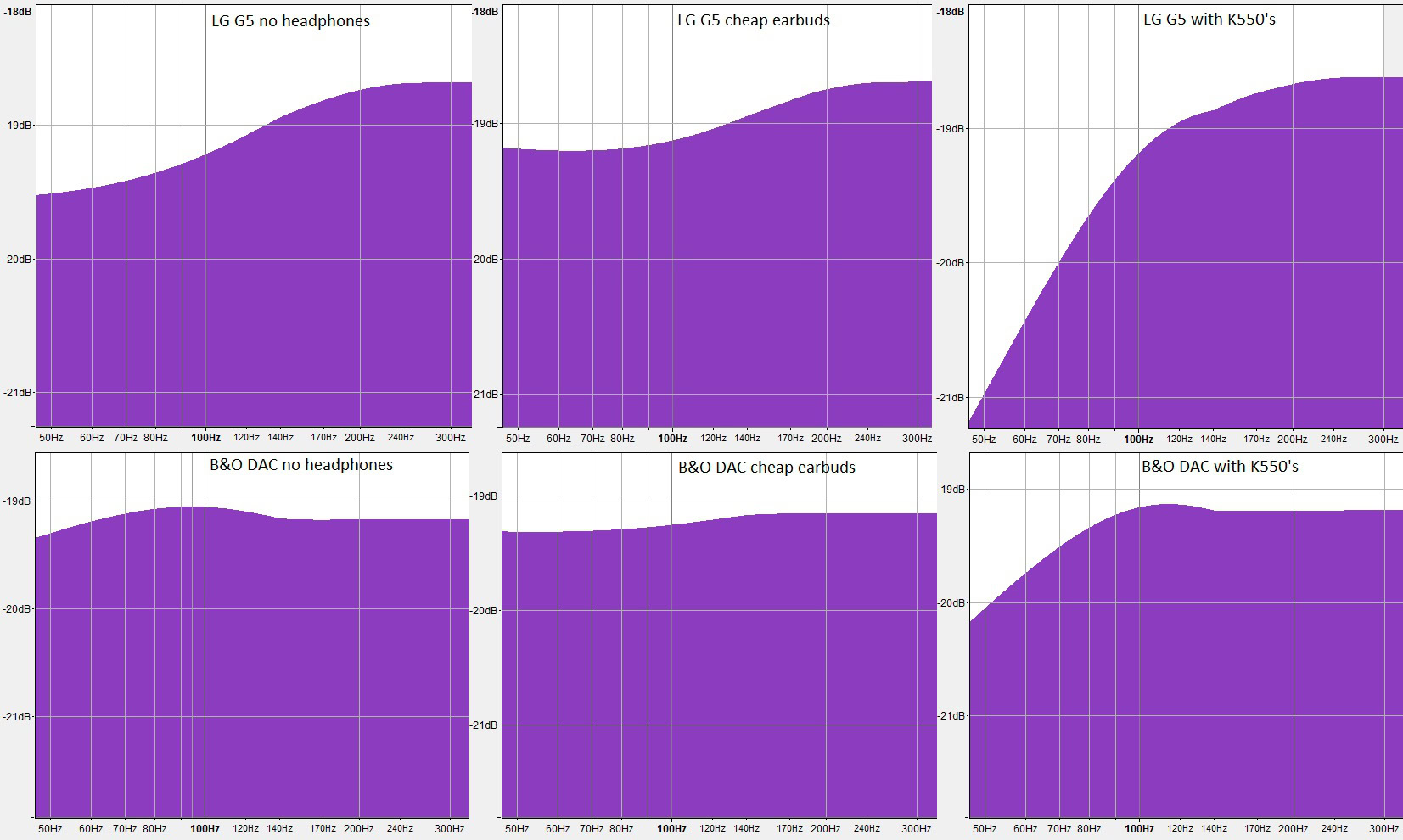
The results show that the default G5’s bass response falls short before 200Hz, even without any headphones to load down the amplifier. The issue becomes far more noticeable when using lower impedance, higher quality headphones. This explains a lot about what I could hear when comparing the tone between the two, particularly when it comes to drums and lower frequency bass instruments.
By comparison, the B&O’s amplifier can happily drive 32 ohm headphones with a mostly flat response until 80Hz and below. Even then, we are only looking at a virtually inaudible 1dB of loss here, compared with the slightly more noticeable 2.5dB to 3dB of loss when using the regular G5 output. This difference is a lot less pronounced with higher impedance headphones.
This leads nicely into my final point about sound. Although the B&O DAC sounded a little better than the normal G5 through some very cheap earbuds, the differences were far less noticeable than when listening through my more expensive pair. The problems with the headphones easily outweighed the gains offered from the DAC. So if your purchasing options are limited to either the DAC or some better headphones, the latter is by far and away the choice you should make.
Wrap Up

LG’s Hi-Fi Plus add-on was always designed with the audio enthusiast in mind and I think that you probably need that kind of ear to get the most out of it. That said, I’m not quite sure that the module has too much to offer the most seriously spec hungry audiophiles either, as there are external DACs with superior numbers and features on the market already.
Although the sound is rather nice, it’s disappointing that LG’s Hi-Fi Plus doesn’t throw any useful additional software features into the mix. For example, equalization options remain locked out in the default music player when playing back 24-bit files, hinting at a limit to the phone’s DSP or software capabilities which the DAC does not augment at all. When you are paying $150+ for a dedicated audio device on top of the phone’s $600 price tag, some users may expect more options out of the box. Fortunately, you can get around this with a third party music player, but I haven’t been able to test compatibility will all of the options out there.
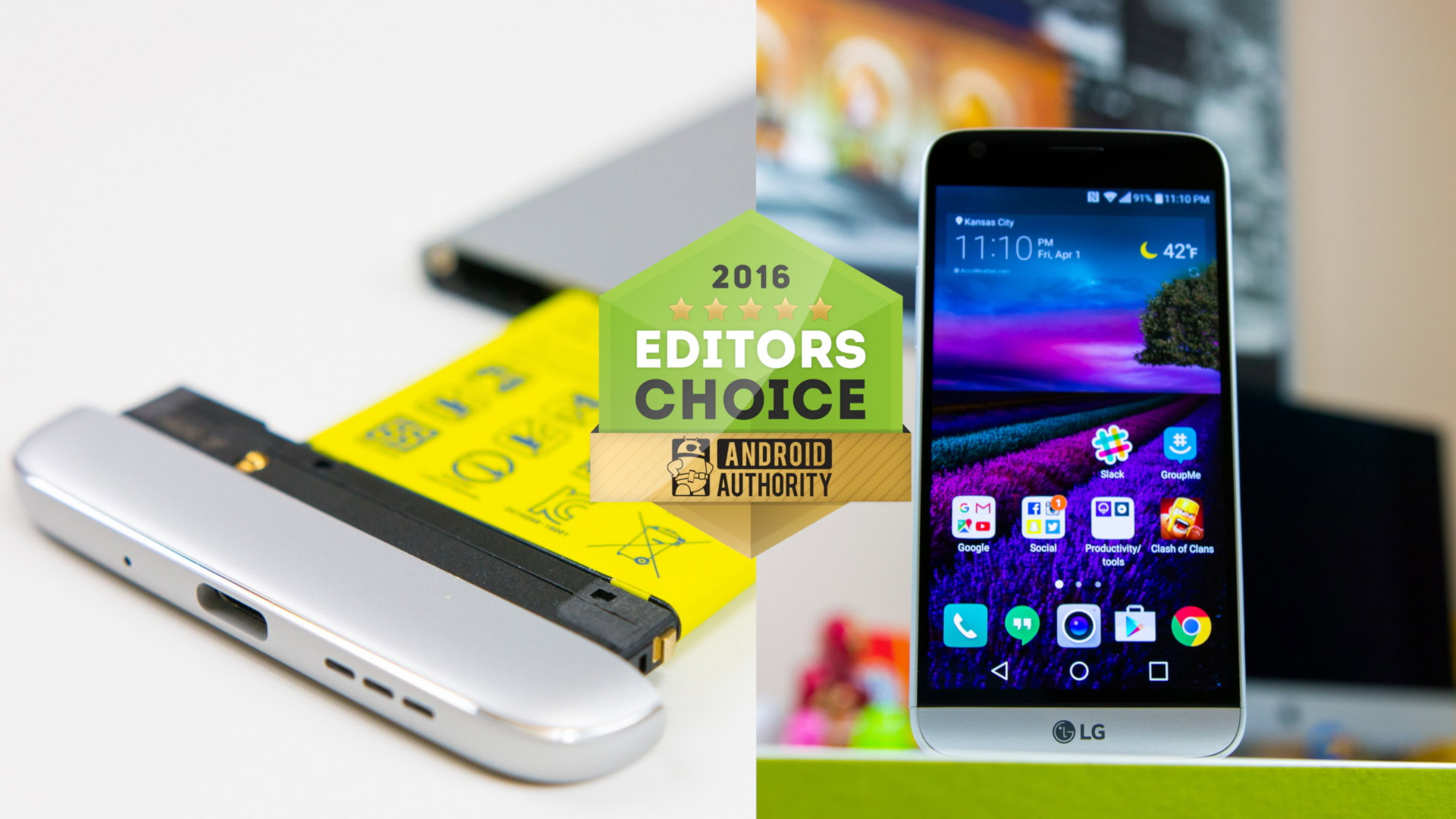
Personally, I am unconvinced about the merits postulated about “Hi-Fi” and “studio quality” audio files, and the B&O DAC has done nothing to change my mind in this regard. However, the modular component does offer a perceivable improvement to the listening experience that music lovers will enjoy, and that’s the most important point. Those with a good pair of low impedance headphones will certainly see the biggest benefits when switching to this audio module. This holds true even when playing back lower quality, compressed audio through streaming sites such as Spotify or Google Play Music.
Overall I’m reasonably impressed with the LG G5’s audio accessory and handset owners should certainly take a look at it if they’re big on music. However, I don’t think it is the must-have accessory that will sell the undecided on the G5’s modular design.